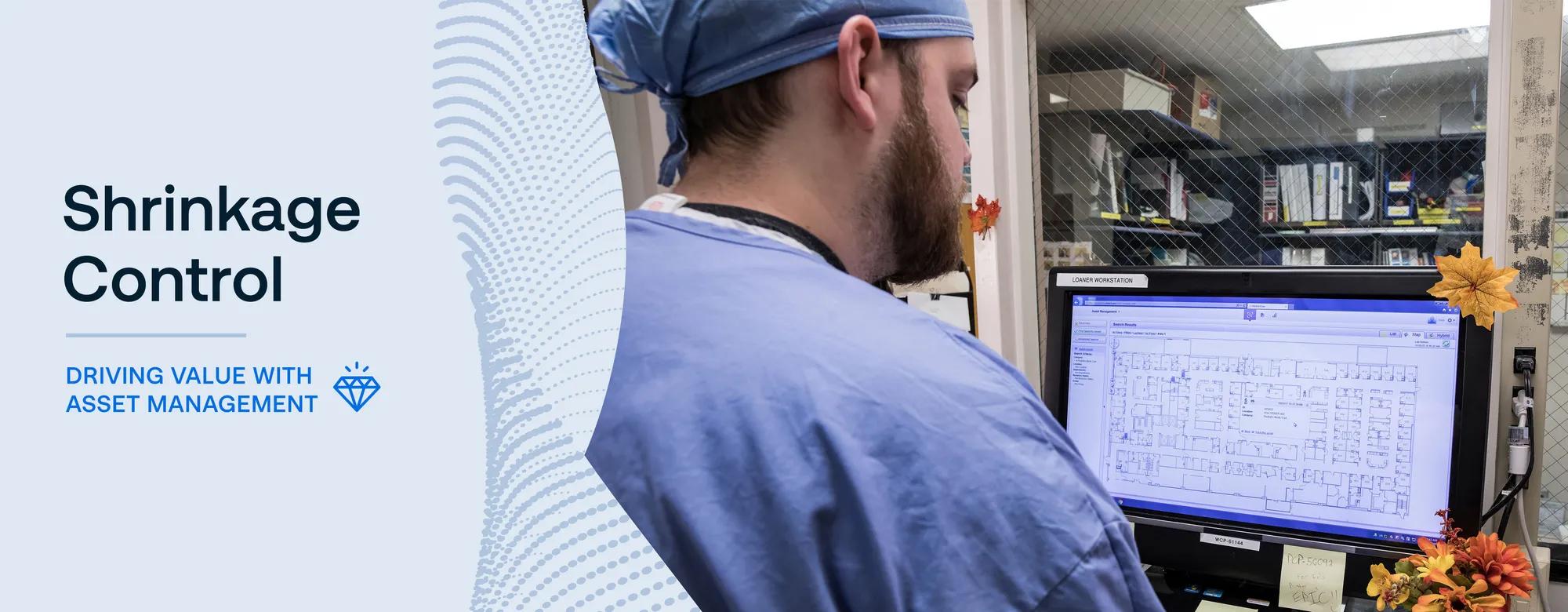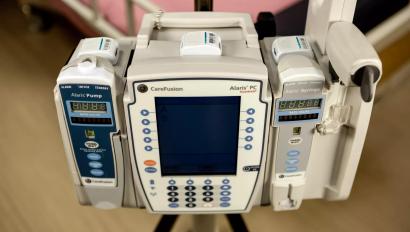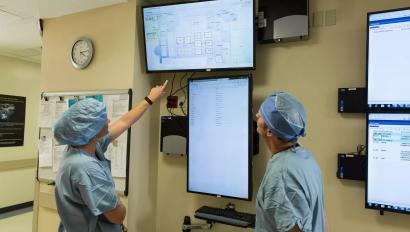Two Steps for More Effective Shrinkage Control

How many dollars are walking out your hospital doors in the form of inventory shrinkage? Discover the two steps for using RTLS to take control of shrinkage.
Inventory shrinkage: It’s the difference between your hospital’s documented inventory and what a physical inventory confirms is actually on hand. As medical devices become smaller, more mobile and more valuable, there’s almost always a gap between these two numbers.
The Challenge of Shrinkage Is More Pressing Than Ever
By design, many medical devices have become very portable. That makes them more vulnerable to loss.
By the time you realize a device is missing, it’s often been rendered unusable by the laundering process or compaction in your facility’s trash. In addition, your hospital may see wheelchairs and other mobile assets routinely exit your doors, never to be returned.
Whether caused by accidental loss or intentional theft, the result of inventory shrinkage is the same: spending precious capital funds on replacement equipment. This problem impacts all healthcare stakeholders.
Two Primary Goals of Inventory Shrinkage Best Practices
Inventory shrinkage best practices focus on two primary goals:
- Prevent equipment from “walking out the door” whether in a laundry bin, patient transfer to another facility, or inside a visitor’s pocket.
- Analyze loss history to identify process improvements. Such improvements can help prevent accidental loss while an asset is still recoverable (for example, before it’s inadvertently tossed into biohazard bags or laundry bins). These insights also help you pinpoint the most problematic areas of the facility—in other words, where loss is occurring most frequently.
Location System (RTLS) can help you implement or improve both of those best practices.
How Can RTLS Improve Shrinkage Control?
As you invest in infrastructure to support RTLS healthcare asset tracking, your hospital will need to assess which areas require “chokepoint” detection, such as laundry chutes, docks and exits. These areas are where Low Frequency exciter devices can be installed. When a tagged asset comes within the exciter range, the RTLS system knows the exact tag location and sends an alert to staff instantly. Exciters can produce a rapid ROI, as preventing the loss of only a small number of devices typically adds up to significant savings in capital equipment budgets.
But keep in mind: Simply tagging assets won’t solve inventory shrinkage. It’s essential to assemble the right team to be involved in the project and design a workflow targeted at specific, suspected loss prevention locations. Such a workflow should include chokepoints that, when entered, trigger alerts automatically sent to the correct party in the organization. That person should be trained and equipped to respond.
Case in Point #1: RWJBarnabas Health
RWJBarnabas Health, New Jersey’s largest healthcare provider, has transformed its day-to-day operations with a large-scale RTLS roll out. RWJ’s implementation includes close to 16,400 assets tagged in seven hospitals. It has saved $1.7 million in capital expenditure by stopping or alerting when an asset leaves the building but also saved on the unnecessary spend to replace the lost asset.
Case in Point #2: TidalHealth Peninsula Regional
TidalHealth Peninsula Regional (formerly PRMC) in Maryland was one of the first hospitals to leverage RTLS to for shrinkage control. They placed exciters in loading and trash docks and saved more than $60,000 in the first year. Small telemetry monitors were especially prone to loss. Each year, the hospital was losing 10 to 12 monitors at a cost of about $3,000 each. That translates to estimated savings of nearly $36,000 per year on these monitors alone.
Read more about additional asset management advanced use cases.
























